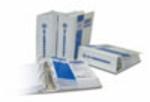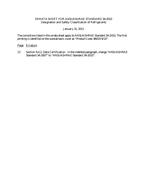Description
Ultraviolet germicidal irradiation (UVGI), typically utilizing 254 nm radiation from low pressure mercury vapor lamps, is being applied in HVAC systems to inactivate infectious airborne microorganisms in health care, security, and general air quality applications. Simulation can play a useful role in the design of application-appropriate systems. A key requirement for accurate modeling is consideration for the impact on lamp UV output of the temperature and velocity of the air stream to which it is exposed. Lamp output varies greatly with the vapor pressure of the plasma it contains, which is highly dependent upon lamp surface cold spot temperature. A model of a single zone HVAC system serving an office space was constructed and was used to simulate the effects of UVGI device location, weather conditions, filter efficiency, and operating cycle on control of generic vegetative bacterialike and fungal spore-like air contaminants. UVGI device modeling included a model of variable lamp output based on predicted average lamp surface temperature. It was found that lamp output could vary by more than 50% across the range of conditions considered with variations in average contaminant concentration during occupied hours as large as 13%. Operation of UVGI only during occupied hours produced similar occupied hour concentration to continuous operation, but much larger unoccupied hour concentrations. Filtration was found to complement UVGI well by removing the larger spore-like contaminant for which UVGI was less effective than for bacteria.
IAQ 2007 Conference held in Baltimore, Maryland, October 14-17, 2007
Units: Dual
Citation: IAQ Conference: IAQ 2007: Healthy and Sustainable Buildings
Product Details
- Published:
- 2008
- Number of Pages:
- 11
- File Size:
- 1 file , 640 KB
- Product Code(s):
- D-IAQ2007-26




